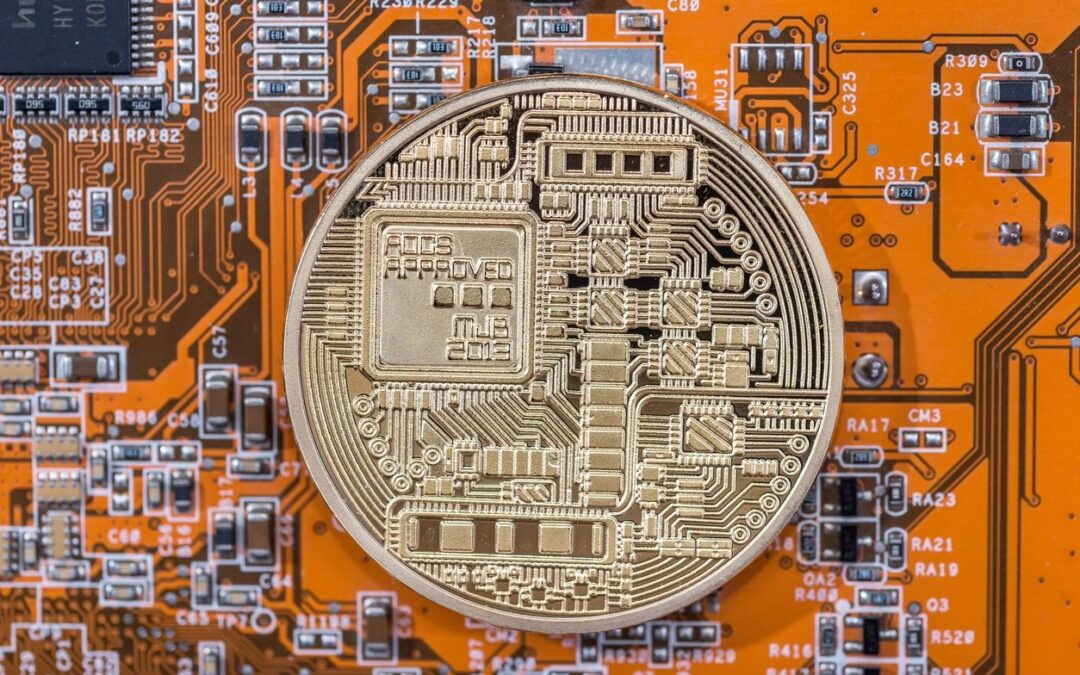
by Nicholas Mitsakos | Book Chapter, Currency, Digital Assets, Investments, Writing and Podcasts
Bitcoin is an innovative, rapidly expanding network for storing and exchanging value among investors.If it’s an asset, does it have an inherent value, like gold? Arguments about “inherent value” are, and always will be, meaningless. Is there really some kind of “inherent value” in gold? We just decided it was valuable to us. The same is happening with Bitcoin.
It’s a cryptoasset that has the safe haven characteristics of gold and will potentially compete with it for a place in portfolios. Bitcoin is not a currency and will not be adopted as a new medium of exchange. It is not a stable store of value, nor can it be easily transmitted and exchanged for any good or service at a consistently predictable value. But, that’s not important from an investor’s perspective. Bitcoin remains incredibly volatile, and its correlation with other major assets has been inconsistent, but allocations are seen as suitable among an increasing number of investment professionals, and, increasingly, it is seen as an alternative investment equivalent to a derivative or other call options, given the potential for spectacular returns. The downside is well-defined while the upside can be asymmetric and significant.

by Nicholas Mitsakos | Book Chapter, Digital Assets, Investments, Writing and Podcasts
Cryptocurrencies Hit New Highs. Should we be terrified?
Probably.
Bitcoin, Ether and, the most recent joke, frenzy, and punch line, Dogecoin, have increased 10x to 20x over the last 12 months. A spectacular return, but can it last?
Probably not.
The forces driving the eye-watering returns are the same as those that drove the insanity behind GameStop: the equivalent of a trading floor in every pocket funded with excess cash looking for disruptive investment opportunities and charging forward like an out of control herd – or lemmings – however you want to envision it. Cryptocurrency became the overwhelming target of Reddit day traders and mobs. Social media influencers, led by various forms of PT Barnum imitators like Elon Musk and many less sophisticated contributors, combined with the public listing of Coinbase to create a massive rally
Despite making inroads, Bitcoin and other digital currencies are still only a tool for speculators. There is no prospect of stable value enabling the fair exchange of assets for goods and services. It is a store of value, but much like any speculative asset, it can be a store value that fluctuates wildly.
That is not to say that some speculative assets, whether they be works of art, sports cars, or digital currencies can’t ultimately have long-term value and generate excellent investment returns. But digital coins are only one part of the digital asset platform, and will most likely prove to be a sideshow. The real opportunity for value creation, sustainability, and appreciation is the right business model and digital platform for the creation of digital assets that are easily and securely exchanged

by Nicholas Mitsakos | Currency, Investments, Writing and Podcasts
“I believe that the present, accurately seized, foretells the future.” V.S. Naipaul
There is a lot of uncertainty today in the markets, but there has always been uncertainty in the markets. We have never had certainty regarding the economy or the future. The most reasonable exercise, as V.S. Naipaul reminds us, is simply to understand the present. So what’s going on? The economy is accelerating. Inflation isn’t a problem. The Fed is going to keep interest rates as close to zero as possible for the foreseeable. These components are driving valuations higher, and in some cases, approaching stratospheric levels. Some concern is warranted in certain sectors, but overall, things seem to be relatively steady and not too overblown. Earnings appear likely to grow, and in many cases, quite rapidly, for the next couple of years – assuming something unforeseeable does not occur (but this probability is not zero). Bitcoin has a few interesting characteristics worth understanding. It is a decentralized, permissionless, peer-to-peer network of computers that’s permanent and unhackable . An investment in Bitcoin is, in reality, a part of the peer-to-peer computer network (essentially, a slot on the database), and almost all of those slots have been allocated. Only 21 million Bitcoins will be produced and 18.5 million have already been mined and circulated. Price is a function of supply and demand (see Economics 101). Arguments about “inherent value” are, and always will be, meaningless. Is there really some kind of “inherent value” in gold? We just decided it was valuable to us. The same is happening with Bitcoin. Bitcoin supply grew 2.5% in 2020; it will grow 2.0% in 2021.The question for Bitcoin valuation is simple: Is demand growing faster or slower than 2.0% annually?

by Nicholas Mitsakos | Book Chapter, Currency, Investments, Writing and Podcasts
Coinbase, Bitcoin, Ethereum, and Dogecoin
Everything you don’t understand about money combined with everything you don’t understand about computers.
Bitcoin and other digital currencies are going mainstream, and along with that, increased volatility. Last week, cryptocurrencies jumped in value as Coinbase, a cryptocurrency exchange, became a publicly traded company worth approximately $100 billion. In other words, trading in digital currencies, with all the expected volatility and unpredictable nature such securities bring, is here to stay.
by Nicholas Mitsakos | Investment Principles, Investments, Writing and Podcasts
S&P 500 stock market values are experiencing the same volatility as the first half of 2020, the start of the Covid-19 pandemic (based on the 50 largest value movements as a percentage of the index’s total market value).
Heightened volatility has grown more common across the stock market even as major indexes are approaching record highs. The volatility is not limited to specific circumstances of craziness, such as GameStop (rising more than 2,000% and then cratering), or Viacom (losing more than half its value as Achegos imploded). Apple gained $265 billion in market value during only five trading sessions in January – more than the total worth of Coca-Cola. In March, NVIDIA and PayPal each lost over $50 billion in market value in just a couple of days.
These dramatic movements show that market volatility leads to big price movements in stocks, both up and down. There are a couple of factors combining to enhance this turbulence:
The popularity of the momentum trade (buying stocks that are rising quickly and dump the relative losers quickly).
Decreasing liquidity (fewer buyers and sellers for the other side of trades).
Both factors magnify the market’s moves in either direction.

by Nicholas Mitsakos | Book Chapter, Investment Principles, Investments, Writing and Podcasts
The Archegos implosion teaches the same lessons that apparently need to be taught over and over again. High leverage eventually brings margin calls. Margin calls equal disaster. Margin calls come when too much leverage is attached to securities linked to market volatility. All securities are linked to market volatility. There is no such thing as uncorrelated assets anymore. Investment strategies founded on the belief that the securities held are somehow immune from previously “uncorrelated” volatility are anachronistic. Combine these investments with substantial leverage intended to enhance returns, and this strategy ends in disaster. If it’s zero eventually, great quarterly performance is meaningless. It’s risk-adjusted return, idiot. Diligence matters. Questioning assumptions and decisions constantly are the table stakes for any investor. The too clever, overleveraged, overconfident manager believes work is done before an investment decision. That’s the beginning, not the end, and a failure to be diligent in a market with many more influences, uncertainties, and factors impacting a portfolio ends, well, the way Archegos ended. Watching carefully and acting quickly, getting out of suddenly unattractive positions, and revising thinking is almost as good as a good investment choice in the first place. Building a portfolio the way Archegos did is not investing. It’s gambling. The most important lesson is to know the difference.
by Nicholas Mitsakos | Investments, Public Policy, Writing and Podcasts
The last few weeks highlighted the need to bring a new understanding of, and strategy for, investment risk. Volatility is increasing and occurring over a significantly compressed timeframe – for individual stocks and the overall market. Recent trading activity in GameStop, AMC, and a few other stocks demand an investment strategy focusing on Risk Adjusted Return.
The new power of retail investors is here to stay, and that will shake up traditional portfolio managers because they are increasingly losing control of the trading process.
A Trading Floor in My Pocket.
Trading apps on platforms like Robinhood and social media chat rooms found on Reddit are game changers, fueling an unprecedented level of interest and activity (social media information is easily accessible and trading activity has very little friction – few, if any fees, and immediate). These two factors are irreversibly changing the market.
In the past year, U.S. brokers added at least 10 million new retail trading accounts, and a shift to zero trading commissions late in 2019 unlocked a wave of activity that dwarfed even the wild days of the dot-com bubble. Beginning in early 2020, and coinciding with coronavirus lockdowns, trading activity started to surge and has not subsided, even as the economy has gradually reopened. Average daily trading at the biggest retail brokers hit a record of 6.6 million a day in December 2020. In January 2021, it reached 8.1 million. On January 27, 2021, equity volume was triple the average day in 2019.
Retail investing has been a small fish trading in the large hedge fund and institutional pond. But that’s changing. Before the pandemic, retail trading made up about 15% of equity volume; now, it’s consistently making up more than 20%. The game changer is when that activity is concentrated on just a few stocks, a much more likely event among retail investors (driven by social media platforms), and it makes a substantial difference. In the case of GameStop and several other highly shorted stocks, it can cause startling price movements in a very short time.

by Nicholas Mitsakos | Book Chapter, Investment Principles, Investments, Writing and Podcasts
Businesses that combine closed-loop, arms dealer and monopoly characteristics represent something fundamental that is shifting in the global economy. They represent automation that is pervasive, smart, and is a layer that sits across the entire economy. Data processing and prediction build these business models. They permeate all services, including supply chains, logistics, mobility, and consumer offerings. Pervasive and innovative, they represent opportunities for increasing investment returns. Incumbents enhance their position, generate increasing value, create challenging barriers, enable more innovation to solidify their position and will sustain their value because of this new competitive dynamic. Innovation is always a threat, and value can be created from a new entrant, but the bar is increasingly higher for both the level of disruption and quality of innovation to an existing or even new market.
To be sure, new opportunities will be created as new technology develops. An example is the wireless data and smart phone market. Essentially, 4G mobile technology enabled the substantial value creation at Facebook, Netflix, Uber and AirBnB. These companies could build their services on top of this technological platform and create not only a new competitive business, but a new market where they could be the dominant player. As 5G develops and we see unimagined high-speed for data, entertainment, communication, and other services, we will have new businesses and opportunities created on this platform – only so much can be imagined today, others which are yet to come. But there will be real-time connection with customers enabling new and innovative products and services, artificial intelligence permeating software and communication enhancing quality and innovation further, enhanced gaming (perhaps even to a professional level), and virtual reality and augmented reality perhaps finally becoming the market opportunity that has been imagined for many years. This list is far from exhaustive, and without doubt, there will be valuable companies created whose business models we can’t quite imagine today.

by Nicholas Mitsakos | Economy, Investments, Writing and Podcasts
The current low interest rate environment increases the discounted present value of future cash flows and reduces the return demanded for every investment. In other words, when the Fed funds rate is zero, 6% bonds become disproportionately attractive. Buyers have now bid bond prices up until yields are now significantly less. What does it mean if the prices of stocks and listed credit instruments are at levels not driven primarily by fundamentals reasons (i.e. current earnings and the outlook for future growth), but in large part because of the Fed’s buying, it’s injection of liquidity, and the resultant low cost of capital and the market’s lower demanded returns on financial instruments? My conclusions are limited by inadequate foresight and influenced by my optimistic and pessimistic biases. Experience teaches it is hard to get the answer right. Or, as Charlie Munger has said, “it’s not supposed to be easy. Anyone who finds it easy is stupid.” At the risk of being stupid, equity investments in companies, including the five largest, with the unique competitive positions and “closed-loop” business models will remain excellent investments. In addition, certain fixed income securities paying high yields with attractive long-term risk-adjusted safety are extremely attractive and are being ignored in this unique interest-rate environment. This combination will create substantial value. Unique macro forces created by the central banks, unprecedented and sustainably low interest rates combined with pandemic-tested sustainable business models have created truly unique opportunities.

by Nicholas Mitsakos | Currency, Economy, Investment Principles, Investments, Public Policy, Trade, Writing and Podcasts
We are rapidly approaching a zero-interest rate world. Interest rates are being driven to zero (or below zero in many cases) as a first-line tool for central banks to generate economic activity in the face of the dramatic negative impact of the pandemic, as well as existing and lingering economic fallout. This toolbox will be empty soon, and the only remaining weapon will be fiscal policy. Among other things, fiscal policy and domestic financial markets will have an overwhelming influence on global currencies. Capital flows will dramatically impact currency volatility as capital moves to more attractive countries with more liquid and robust asset markets.

by Nicholas Mitsakos | Investment Principles, Investments, Writing and Podcasts
The government is providing a backstop for all government-backed securities. The Fed is also going to be extremely active in the markets, buying not only fixed-income securities but also stock index funds. They are working very hard to keep the market aloft and preventing it from cratering (they still may not be successful). This is an election year and this administration will do everything it can to make sure things look as good as possible through November.
I understand there is riskiness, but I expect economic activity and fed support to continue to increase. Even if we have an increase in coronavirus cases, people will remain optimistic – justifiably or not.
There will be extreme volatility. Economic activity will waiver, increase suddenly, pull back, and the pattern will continue for some time to come.
Market volatility is our friend because we have a stable source of cash flow that protects our capital base. On top of that, the speculative strategy will profit from volatility while the equity investment strategy will play for the long term – it is a multi-year long-term perspective.
Although there are a handful of investments where confidence in the five-year curve is justified, and now is a great time to make these long-term investments, it is still very unpredictable.
The short- and long-term state of the economy, how this massive amount of debt gets repaid, how we reopen businesses, etc. is unknown, volatile, and any attempt to predict seems fruitless. But, understanding how to adjust for risk, accept, and ultimately take advantage of volatility, will be powerful. Along with a long-term perspective, this will be the most effective investment strategy. The Fed is printing more money. We’re going to see a lot of capital injected into the global economy. But the presence of money is not the important factor. It’s the velocity of money – how people are spending it and is that money chasing after other goods. That will drive inflation. We didn’t see it in the past even though we had a massive capital injection. Deflation and recession are much bigger concerns. Inflation is not on the horizon. The Fed’s enhanced bond-buying, which includes high-yield bonds and other fixed-income securities is unprecedented and has boosted the value of debt portfolios. However, these portfolios (mostly just above or just below investment grade) still yield attractive disproportionate risk-adjusted returns.

by Nicholas Mitsakos | Artificial Intelligence, Biotechnology, Book Chapter, Investments, Technology, Writing and Podcasts
This article was written by Nicholas Mitsakos : Chairman and CEO at Arcadia Capital Group. Disruptive technologies are apparently being developed faster than we can adapt to the full impact of their disruption. Really? Internet time may not be the fast-paced...










